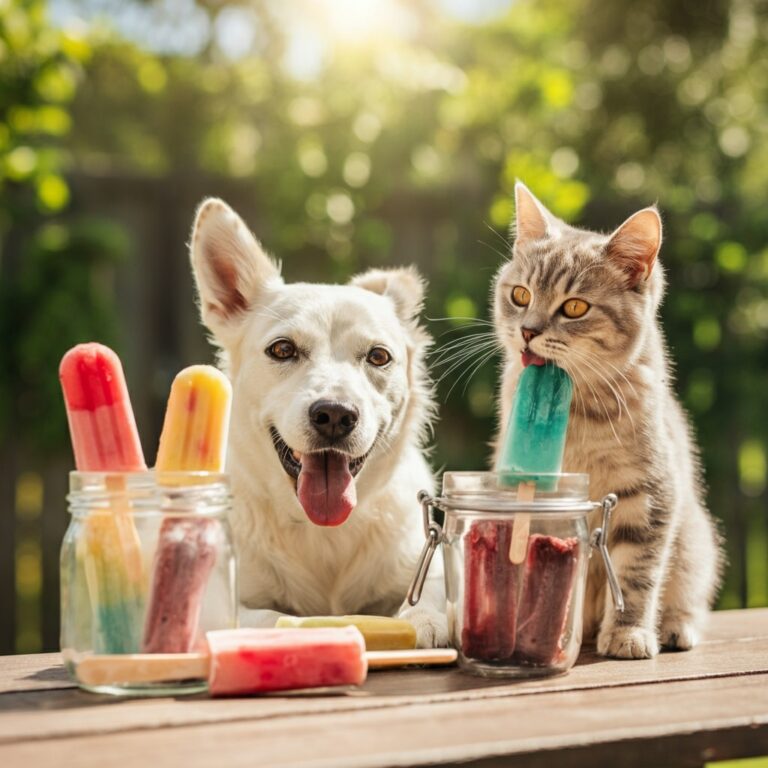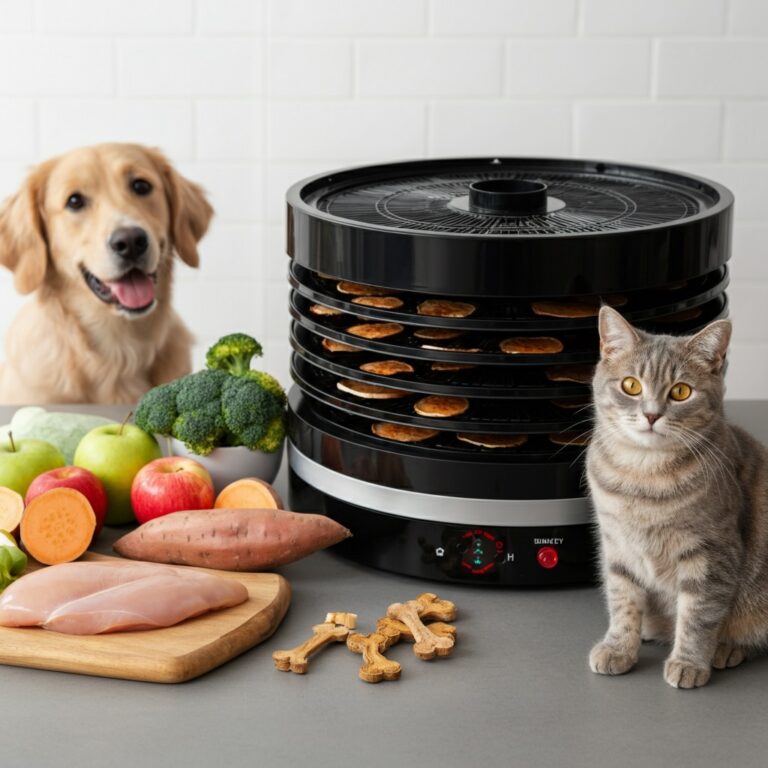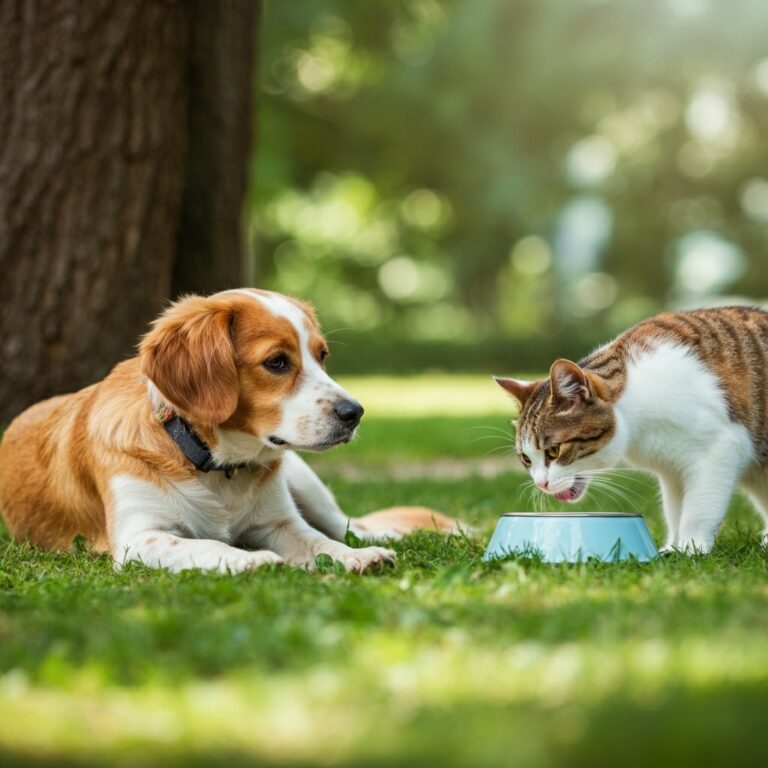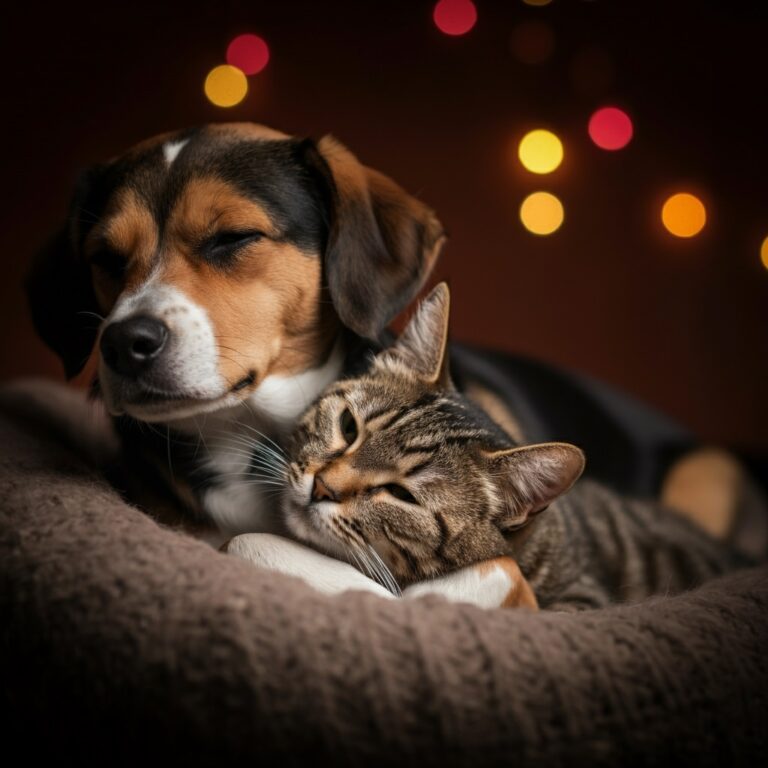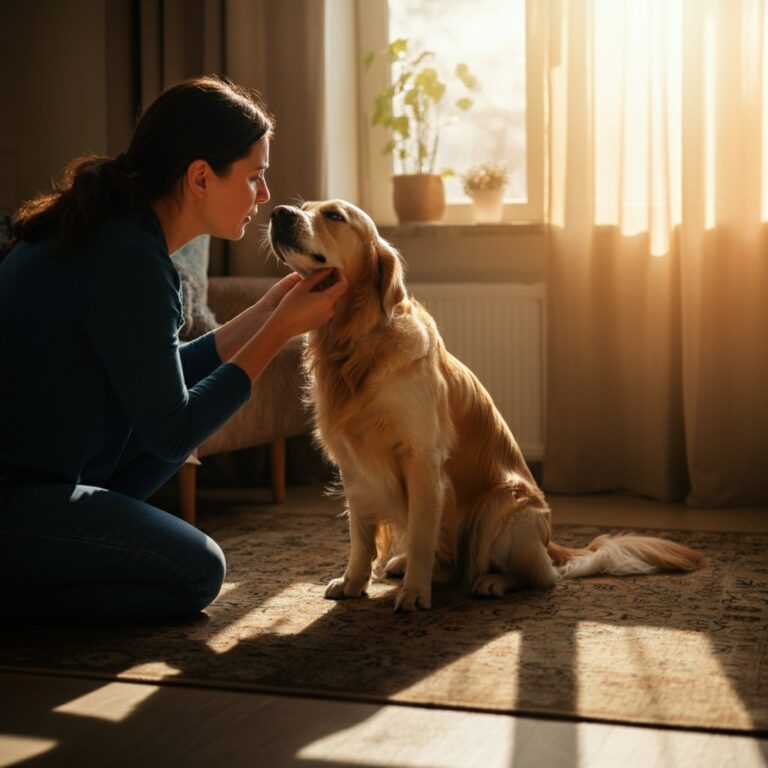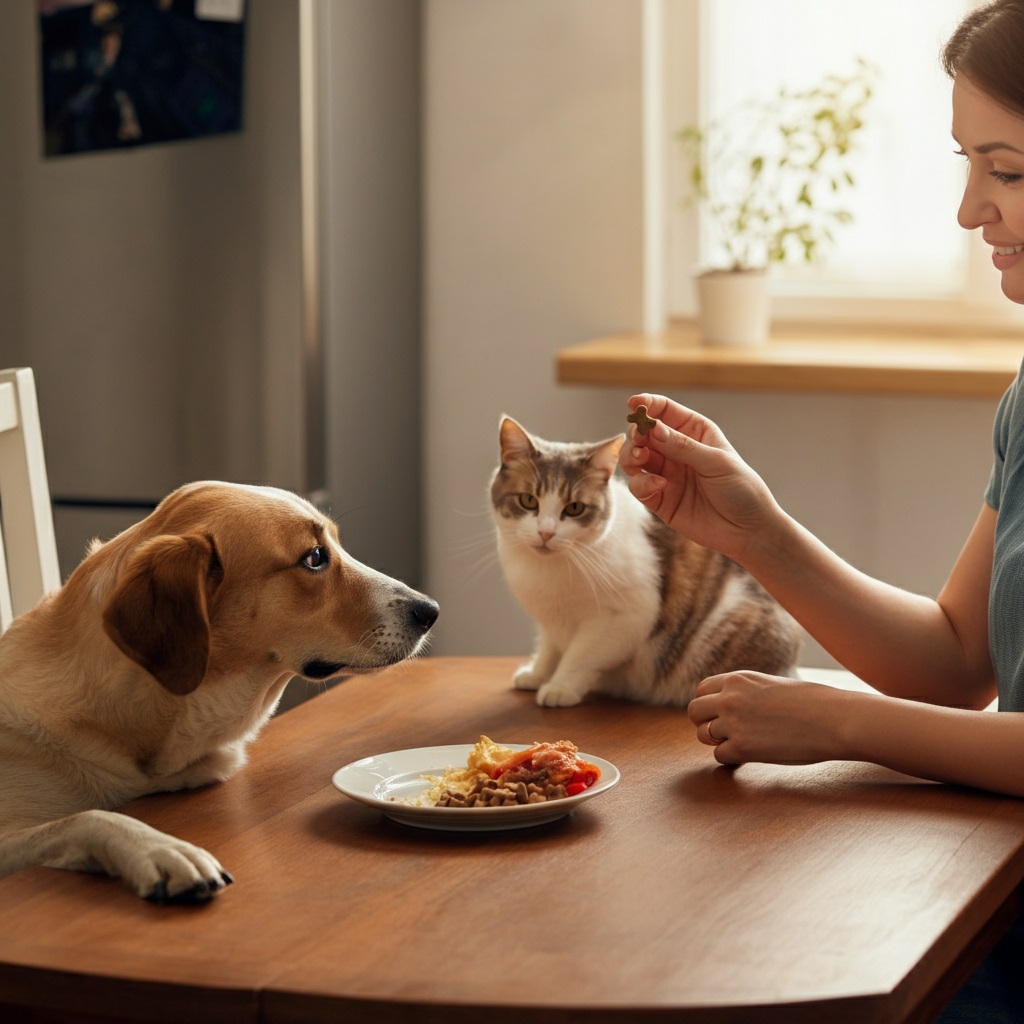
Most pet owners have been there: your furry friend gives you those irresistible puppy dog eyes while you’re enjoying dinner, and before you know it, you’re sliding a piece of chicken or a spoonful of rice their way. After all, what could be wrong with sharing a little bit of your meal with your beloved companion?
The truth is, feeding leftovers to pets carries more risks than many owners realize. While some human foods are perfectly safe for our four-legged friends, others can cause serious health complications ranging from mild digestive upset to life-threatening poisoning. Understanding these dangers isn’t about depriving your pet of treats—it’s about keeping them healthy and happy for years to come.
This comprehensive guide will explore the hidden risks of sharing your meals with pets, identify the most dangerous foods to avoid, and provide safer alternatives that will satisfy both you and your furry family member. By the end of this article, you’ll have the knowledge needed to make informed decisions about what goes into your pet’s food bowl.
Why Human Food Can Be Dangerous for Pets
Pets have fundamentally different digestive systems than humans, which means foods that are nutritious and safe for us can be harmful or even toxic to them. Dogs and cats have evolved with specific dietary needs that differ significantly from our omnivorous diet.
Digestive System Differences
The digestive tract of dogs and cats processes food differently than humans. For instance, dogs have shorter intestinal tracts, which means food moves through their system more quickly. This can make them more sensitive to rich, fatty foods that might cause pancreatitis. Cats, being obligate carnivores, have even more specialized nutritional requirements and lack certain enzymes needed to process many plant-based foods.
Toxic Compounds in Common Foods
Many everyday human foods contain compounds that are harmless to us but toxic to pets. These substances can affect various organs and systems in animals, leading to symptoms ranging from mild gastrointestinal upset to severe neurological damage or organ failure.
Nutritional Imbalances
Even when human food isn’t immediately toxic, regular feeding of leftovers can create nutritional imbalances in your pet’s diet. Commercial pet foods are formulated to provide complete and balanced nutrition, and adding significant amounts of human food can disrupt this balance, potentially leading to deficiencies or excesses of certain nutrients.
The Most Dangerous Leftover Foods for Pets
Understanding which specific foods pose the greatest threats to your pet’s health is crucial for preventing accidents and emergencies.
Chocolate and Caffeine
Chocolate tops the list of dangerous foods for pets due to compounds called theobromine and caffeine. These substances are toxic to both dogs and cats, with dark chocolate and baking chocolate being the most dangerous due to their higher concentrations. Even small amounts can cause vomiting, diarrhea, increased heart rate, seizures, and in severe cases, death.
Onions and Garlic
All members of the allium family, including onions, garlic, shallots, and chives, contain compounds that can damage red blood cells in pets, leading to anemia. This damage is cumulative, meaning that small amounts over time can be just as dangerous as a large single dose. Symptoms may not appear immediately, making this particularly insidious.
Grapes and Raisins
Despite ongoing research, scientists still don’t fully understand why grapes and raisins are toxic to dogs, but the effects can be devastating. Even small amounts can cause acute kidney failure in some dogs, and there’s no way to predict which dogs will be affected or what amount will trigger a reaction.
Xylitol-Containing Foods
This artificial sweetener, found in sugar-free gum, candies, baked goods, and some peanut butters, can cause a rapid drop in blood sugar levels in dogs, leading to weakness, loss of coordination, and collapse. In severe cases, xylitol can cause liver damage.
Avocado
While the flesh of avocado is less toxic than other parts of the fruit, it still contains persin, a compound that can cause digestive upset in pets. The pit poses additional choking and intestinal blockage risks.
Bones from Cooked Meat
Cooked bones become brittle and can splinter, creating serious risks of choking, mouth injuries, broken teeth, or internal punctures and blockages. This is particularly dangerous because many people assume bones are natural and safe for pets.
Seemingly Harmless Foods That Can Cause Problems
Beyond the obviously dangerous foods, many common leftovers that seem harmless can still cause significant health issues for pets.
High-Fat Foods
Rich, fatty foods like bacon, sausage, fried foods, and gravies can trigger pancreatitis in pets, particularly dogs. This painful condition causes inflammation of the pancreas and can lead to serious complications requiring intensive veterinary treatment.
Dairy Products
Many adult pets are lactose intolerant, meaning they lack sufficient amounts of the enzyme lactase needed to properly digest milk sugar. Feeding dairy products can result in digestive upset, including diarrhea, gas, and abdominal discomfort.
Continues after advertising
Salty and Seasoned Foods
Foods high in salt or heavily seasoned with spices can cause excessive thirst, urination, and in severe cases, sodium poisoning. Pets have much lower salt requirements than humans, and their systems can be overwhelmed by the sodium content in processed human foods.
Raw or Undercooked Foods
Raw meat, eggs, and fish can contain harmful bacteria like Salmonella and E. coli, which can cause food poisoning in pets just as they can in humans. Additionally, raw eggs contain avidin, which can interfere with biotin absorption, and raw fish may contain parasites.
The Health Consequences of Feeding Leftovers
The effects of feeding inappropriate leftovers to pets can range from minor digestive upset to life-threatening emergencies, depending on the food consumed and the amount eaten.
Immediate Health Effects
Short-term consequences of feeding dangerous leftovers can include vomiting, diarrhea, lethargy, loss of appetite, excessive drooling, and abdominal pain. These symptoms often appear within hours of consumption and may require immediate veterinary attention.
Long-Term Health Implications
Regular feeding of inappropriate human food can lead to chronic health problems including obesity, diabetes, pancreatitis, liver disease, and nutritional deficiencies. These conditions can significantly impact your pet’s quality of life and lifespan while creating substantial veterinary expenses.
Emergency Situations
Some leftover foods can create veterinary emergencies requiring immediate treatment. Signs that require urgent veterinary care include difficulty breathing, seizures, collapse, severe vomiting or diarrhea, unusual behavior, or signs of severe pain.
Safe Alternatives to Leftovers
Just because many human foods are off-limits doesn’t mean you can’t share safe, healthy treats with your pet.
Pet-Safe Human Foods
Several human foods are safe for pets in moderation, including plain cooked chicken (without bones or seasoning), plain rice, carrots, green beans, pumpkin, and small amounts of plain yogurt for pets who tolerate dairy.
Commercial Pet Treats
High-quality commercial pet treats are formulated specifically for your pet’s nutritional needs and safety. Look for treats made with wholesome ingredients and appropriate for your pet’s size and dietary requirements.
Homemade Pet-Safe Treats
Creating homemade treats using pet-safe ingredients allows you to control exactly what your pet consumes. Simple recipes using ingredients like sweet potato, oats, and peanut butter (xylitol-free) can provide healthy, enjoyable treats.
Creating a Pet-Safe Kitchen Environment
Preventing accidental ingestion of dangerous foods requires creating an environment where harmful foods are kept away from curious pets.
Proper Food Storage
Store potentially dangerous foods in secure containers or areas that pets cannot access. This includes keeping trash cans with tight-fitting lids and ensuring that all family members understand the importance of not leaving dangerous foods within reach.
Educating Family Members
All household members, including children, should understand which foods are dangerous for pets and the importance of not sharing meals or snacks. Create clear guidelines about what can and cannot be shared with pets.
Emergency Preparedness
Keep your veterinarian’s contact information easily accessible, including after-hours emergency numbers. Know the signs of food poisoning in pets and have a plan for getting emergency veterinary care if needed.
When to Consult Your Veterinarian
Understanding when to seek professional help can make the difference between a minor incident and a serious health crisis.
Immediate Veterinary Care
Seek immediate veterinary attention if your pet has consumed any known toxic foods, shows signs of severe distress, or exhibits symptoms like difficulty breathing, seizures, or collapse.
Preventive Consultations
Discuss your pet’s diet with your veterinarian during regular check-ups. They can provide personalized advice based on your pet’s specific health needs, age, and any existing medical conditions.
Read More👉 Dog Vision: What Colors Can They Really See?
Protecting Your Pet’s Health Through Informed Choices
The bond between pets and their owners often revolves around sharing experiences, including meals. However, the best way to show love for your furry companion is to prioritize their health and safety over the momentary pleasure of sharing your dinner.
By understanding the real dangers of feeding leftovers to pets and implementing safer alternatives, you can maintain that special connection while protecting your pet from unnecessary health risks. Remember that commercial pet foods are designed to meet all of your pet’s nutritional needs, and treats should make up no more than 10% of their daily caloric intake.
When in doubt, always consult with your veterinarian before introducing new foods to your pet’s diet. Your vigilance today can prevent serious health problems tomorrow and ensure that your beloved companion enjoys a long, healthy, and happy life by your side.
